The organization of the human cerebral cortex estimated by intrinsic functional connectivity
- PMID: 21653723
- PMCID: PMC3174820
- DOI: 10.1152/jn.00338.2011
The organization of the human cerebral cortex estimated by intrinsic functional connectivity
Abstract
Information processing in the cerebral cortex involves interactions among distributed areas. Anatomical connectivity suggests that certain areas form local hierarchical relations such as within the visual system. Other connectivity patterns, particularly among association areas, suggest the presence of large-scale circuits without clear hierarchical relations. In this study the organization of networks in the human cerebrum was explored using resting-state functional connectivity MRI. Data from 1,000 subjects were registered using surface-based alignment. A clustering approach was employed to identify and replicate networks of functionally coupled regions across the cerebral cortex. The results revealed local networks confined to sensory and motor cortices as well as distributed networks of association regions. Within the sensory and motor cortices, functional connectivity followed topographic representations across adjacent areas. In association cortex, the connectivity patterns often showed abrupt transitions between network boundaries. Focused analyses were performed to better understand properties of network connectivity. A canonical sensory-motor pathway involving primary visual area, putative middle temporal area complex (MT+), lateral intraparietal area, and frontal eye field was analyzed to explore how interactions might arise within and between networks. Results showed that adjacent regions of the MT+ complex demonstrate differential connectivity consistent with a hierarchical pathway that spans networks. The functional connectivity of parietal and prefrontal association cortices was next explored. Distinct connectivity profiles of neighboring regions suggest they participate in distributed networks that, while showing evidence for interactions, are embedded within largely parallel, interdigitated circuits. We conclude by discussing the organization of these large-scale cerebral networks in relation to monkey anatomy and their potential evolutionary expansion in humans to support cognition.
Figures

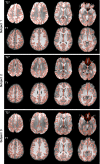


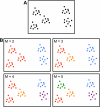

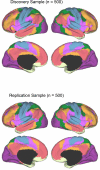

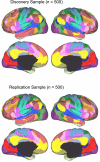

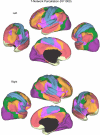

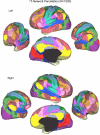
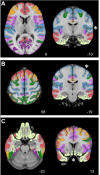
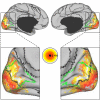


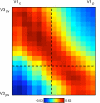

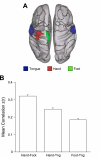
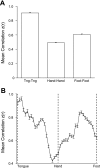
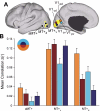



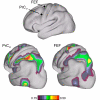
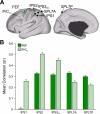


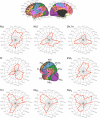
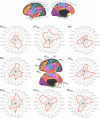




References
-
- Ahn YY, Bagrow JP, Lehmann S. Link communities reveal multiscale complexity in networks. Nature 466: 761–764, 2010 - PubMed
-
- Amunts K, Malikovic A, Mohlberg H, Schormann T, Zilles K. Brodmann's areas 17 and 18 brought into stereotaxic space—where and how variable? Neuroimage 11: 66–84, 2000 - PubMed
-
- Amunts K, Schleicher A, Bürgel U, Mohlberg H, Uylings HBM, Zilles K. Broca's region revisited: cytoarchitecture and intersubject variability. J Comp Neurol 412: 319–341, 1999 - PubMed
Publication types
MeSH terms
Grants and funding
- K01 EB011498/EB/NIBIB NIH HHS/United States
- 1R21NS072652/NS/NINDS NIH HHS/United States
- R01NS052585/NS/NINDS NIH HHS/United States
- AG021910/AG/NIA NIH HHS/United States
- 1S10RR023043/RR/NCRR NIH HHS/United States
- 1R01NS070963/NS/NINDS NIH HHS/United States
- 1S10RR023401/RR/NCRR NIH HHS/United States
- P41RR14074/RR/NCRR NIH HHS/United States
- P41RR14075/RR/NCRR NIH HHS/United States
- R01 NS070963/NS/NINDS NIH HHS/United States
- K25 EB013649/EB/NIBIB NIH HHS/United States
- K08MH067966/MH/NIMH NIH HHS/United States
- 1S10RR019/RR/NCRR NIH HHS/United States
- HHMI/Howard Hughes Medical Institute/United States
- RC1AT005728/AT/NCCIH NIH HHS/United States
- U24RR021382/RR/NCRR NIH HHS/United States
- AG022381/AG/NIA NIH HHS/United States
- U54MH091665/MH/NIMH NIH HHS/United States
- K25 NS069805/NS/NINDS NIH HHS/United States
LinkOut - more resources
Full Text Sources
Other Literature Sources
Medical

